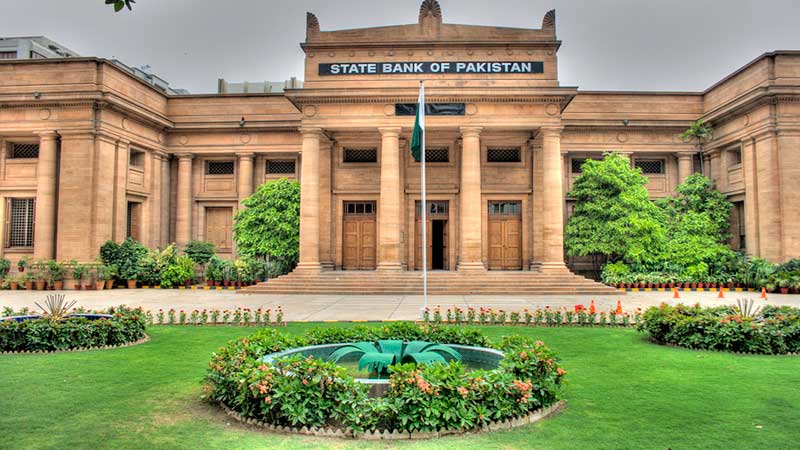Is there no end to tightening?

One of the most criticised policies of the SBP is to take real interest rates at 5 percent plus on past 12-month moving average inflation, and at 1.75 percent based on SBP expected inflation (11-12%) in FY20. The reason explained by Governor SBP is that he IMF is expecting inflation at 13 percent for FY20, thus the policy rate is increased to 13.25 percent.
The need is to check IMF inflation forecast which is higher than SBP and market (10-11%). With falling commodity prices, the SBP may downward revise its inflation forecast as well. And the core inflation in FY20 is expected to be less than headline numbers - the difference on July-August data is 3 percentage points on old base and 1.3 percentage points on urban inflation in new base.
The question is why are the interest rates too high? And what is the motive behind keeping unprecedentedly high real interest rates? The textbook answer is to curb domestic demand to arrest inflationary trends. If that is the case, why did the Governor not mention core inflation and rather emphasized on headline number.
Back in 2008, when food and oil inflation was too high (CPI peaked at 25%, but core highest was recorded at 18.3%), the government reportedly negotiated on pegging interest rates on core inflation and discount rate peaked at 15 percent - real rates were negative in FY08. What has changed this time around to take real interest rates this high?
It is pertinent to look at the financing demand composition in Pakistan to assert the efficacy of higher rates on curbing demand. Based on Jul-19 numbers - out of Rs 20.1 trillion total banking sector credit, 61 percent is government borrowing and 7.8 percent credit is attained by public sector entities. The government loan is largely insulated to interest rate hike.
The biggest impact of demand management is on consumer loans which (barring banks employees discounted loans) is a mere 2.7 percent or Rs 539 billion. How much more can this thin size be curtailed, one may ask. The loans to private businesses are 25.2 percent of banking credit and within it, 44 percent is working capital loan. The working capital may increase due to higher rates as due to slowdown of economy, the inventories are piling up and sales are shrinking. To run plants, more short term loans are required - the cost of loans increases and hurts profitability of corporate sector, and in turn limits government's ability to fetch tax on those profits.
The cost of higher rates is testing the corporate and especially SME sector while not much can be yielded from high interest rates on domestic demand. The financial inclusion in Pakistan is low and large part of economy is informal -28 percent of monetary assets are currency in circulation, and that is insulated to interest rate fluctuations.
The demand, especially import-based, is more receptive to exchange rate; and that is why currency adjustment was imperative and resulted in shrinking current account deficit. But with REER coming down from 120 in Nov-17 to 91 in Jul-19, further depreciation could be detrimental.
The question still remains to be addressed as to why the SBP governor is so keen on higher interest rates? The endgame can be inferred from latest ECC of the cabinet meeting, where proposals to simplify tax regime for non-resident companies investing in local debt market have been approved. That cannot be changed without having a money bill (read mini-budget).
The idea of the SBP Governor is to attract carry trades in Pakistan like it happened in Egypt. In carry trades, investors borrow at lower rates from their local market and invest at higher rates abroad. The rates in Pakistan are at 13-14 percent, while borrowing in the USA is at 2-2.5 percent.
It is a risk proposition to attract hot money at the cost of pushing domestic economy in recession. How much money is to be attracted? And for how much time? What benefit would the economy have by building short-term reserves on quick borrowing? How long will interest rates be kept high for hot money to not evaporate?
When someone asked in the ECC meeting to Governor why are we floating such a risky proposal - have you lined up any investor? He replied with affirmation that he is in talks with Citi Group. He did that with Citi Group in Egypt and now he is eying the same method for Pakistan.
Domestic investors and consumers need explanation from the Governor. The policy of taking rates high is already testing the fiscal house. The IMF team is making an unscheduled Pakistan visit next week. The Fund team is coming to evaluate the economic situation in the backdrop of large deviation of fiscal deficit from provisional numbers. The Fund might be worried on lower than targeted tax revenue collection in July-August.
The buzz in Islamabad is that MoF has itself called IMF as the ministry lacks capacity to balance fiscal forecasting for coming months. The fear is that the IMF may ask for further currency depreciation to lower fiscal imported demand and that may not let interest rates come down.
It would be an irrational choice as within PSDP only, 25-30 percent demand is imported and development expenditure can be cut from a stroke of pen. How can further currency depreciation help in reducing fiscal deficit? How can keeping high interest rates lower sticky current expenditure - salaries & pensions, defence expenditure and debt servicing?
The SBP governor has been saying that central bank does not respond to hearsay and decisions are taking place on evidence. A few hard facts are demonstrated above as evidence.
























Comments
Comments are closed.